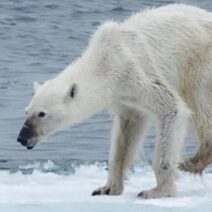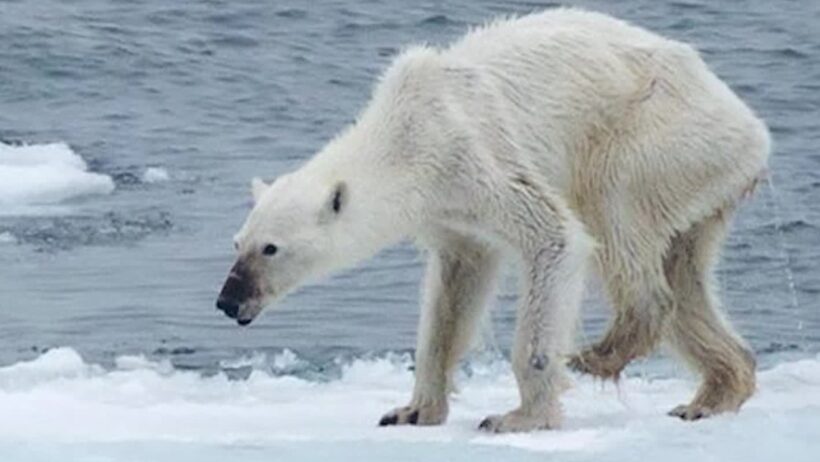When thinking about global warming and climate change, one might instinctively envision images of melting ice caps, emaciated polar bears struggling for survival, or catastrophic weather events. But have you ever pondered how these phenomena directly affect your daily life? While the plight of the polar bear is undeniably tragic and emblematic of broader ecological issues, the ramifications of global warming extend far beyond the arctic tundra and touch every individual on this planet. So, here’s a playful challenge: what if you had to wake up tomorrow and suddenly confront the tangible impacts of climate change in your own community? How would you react?
The situation is pressing. Global warming, driven predominantly by greenhouse gas emissions from human activities, is transforming natural ecosystems and reshaping weather patterns. Higher temperatures lead to bizarre climate phenomena: prolonged droughts, extreme precipitation, violent storms, and rising sea levels. These aren’t distant threats; they are here and now, already infiltrating our lives. Heatwaves are becoming more commonplace, which strains your local food supply, affects agricultural productivity, and can even contribute to health issues such as heat exhaustion or heat stroke.
Think about it for a moment. You might believe global warming will only ravage polar habitats or lead to the extinction of charismatic megafauna. But what about the fresh produce you rely on? The kale, tomatoes, and various fruits you enjoy are at risk. Agriculture is highly sensitive to alterations in temperature and precipitation patterns. If climate conditions shift unfavorably, food scarcity could become your reality. Prices will soar, and access to nutritious food may dwindle. Would you be prepared to forage or adapt to less-than-ideal options? This is not an apocalyptic scenario; it is a forecast based on current trajectories.
Moreover, let’s consider health implications. The rise in temperatures, coupled with poor air quality, can exacerbate respiratory ailments, increase the incidence of heat-related illnesses, and even facilitate the resurgence of vector-borne diseases, such as malaria or dengue fever, in regions where they were previously controlled. In urban settings, the “heat island” effect can render cities unbearably hot, disproportionately affecting vulnerable populations such as the elderly, those with pre-existing health conditions, and economically disadvantaged communities. What would you do if your local hospital was overwhelmed with patients suffering from heat-induced illnesses? The stakes are personal, and they are rising.
Another factor to mull over is water security. Freshwater resources are dwindling as glacial melt — once a reliable supply — diminishes and water bodies become more erratic. Does your city rely on nearby rivers or lakes? As climate change alters these ecosystems, you might find your water source at risk. Droughts have already led to water restrictions in many areas. How would you adapt if your daily routine revolved around water rationing? Would you modify your lifestyle, or would you join the increasing number of climate refugees moving to more habitable areas?
Perhaps you’ve noticed that severe weather events, such as hurricanes and wildfires, are becoming more frequent and intense. These natural disasters have devastating impacts on local economies and infrastructure. If your community were struck by a catastrophic event, would you be prepared for the aftermath? Would you have a plan in place to safeguard your family, your home, and your livelihood? The mental strain of constant uncertainty also contributes to a broader social fabric that can fray under pressure.
Now, let’s shift gears for a moment and focus on solutions. It’s easy to be overwhelmed by the enormity of the climate crisis, but empowerment through knowledge and action can incite meaningful change. Each person can contribute to mitigating climate change by altering habits, advocating for sustainable policies, and supporting green technologies. How can you take action in your everyday life? From reducing energy consumption at home, using public transport, or even voting for eco-conscious policies in local and national elections, individual efforts collectively amount to significant impact.
Consider embracing renewable energy sources for your household. Solar panels and wind turbines are no longer futuristic concepts but viable alternatives that can reduce reliance on fossil fuels. Furthermore, advocating for changes in your local community — such as promoting tree-planting initiatives, reducing plastic usage, or participating in local clean-up drives — can foster a sense of unity and purpose. This is how you can transform the narrative from one of despair to one of hope.
Naturally, the path to sustainability requires systemic change. Governments and corporations must play their parts by enacting environmentally-friendly policies and investing in green technologies. This can only be achieved through public demand. How will you show your commitment to a more sustainable future? Each action counts. Every voice matters. By being in alignment with those who advocate for progress, you bolster the movement for change.
In summary, global warming is not a distant plight reserved for polar bears or far-off lands. It’s a reality that impacts your life now and will continue to do so in the future. Your engagement in this pressing issue is vital. Acknowledge the challenge — make the connection between the larger forces of climate change and your personal activities. Embrace awareness and take action. If the polar bears’ struggle against an increasingly hostile environment speaks to your conscience, let it also galvanize your spirit for advocacy. The climate can change, but so can we.





